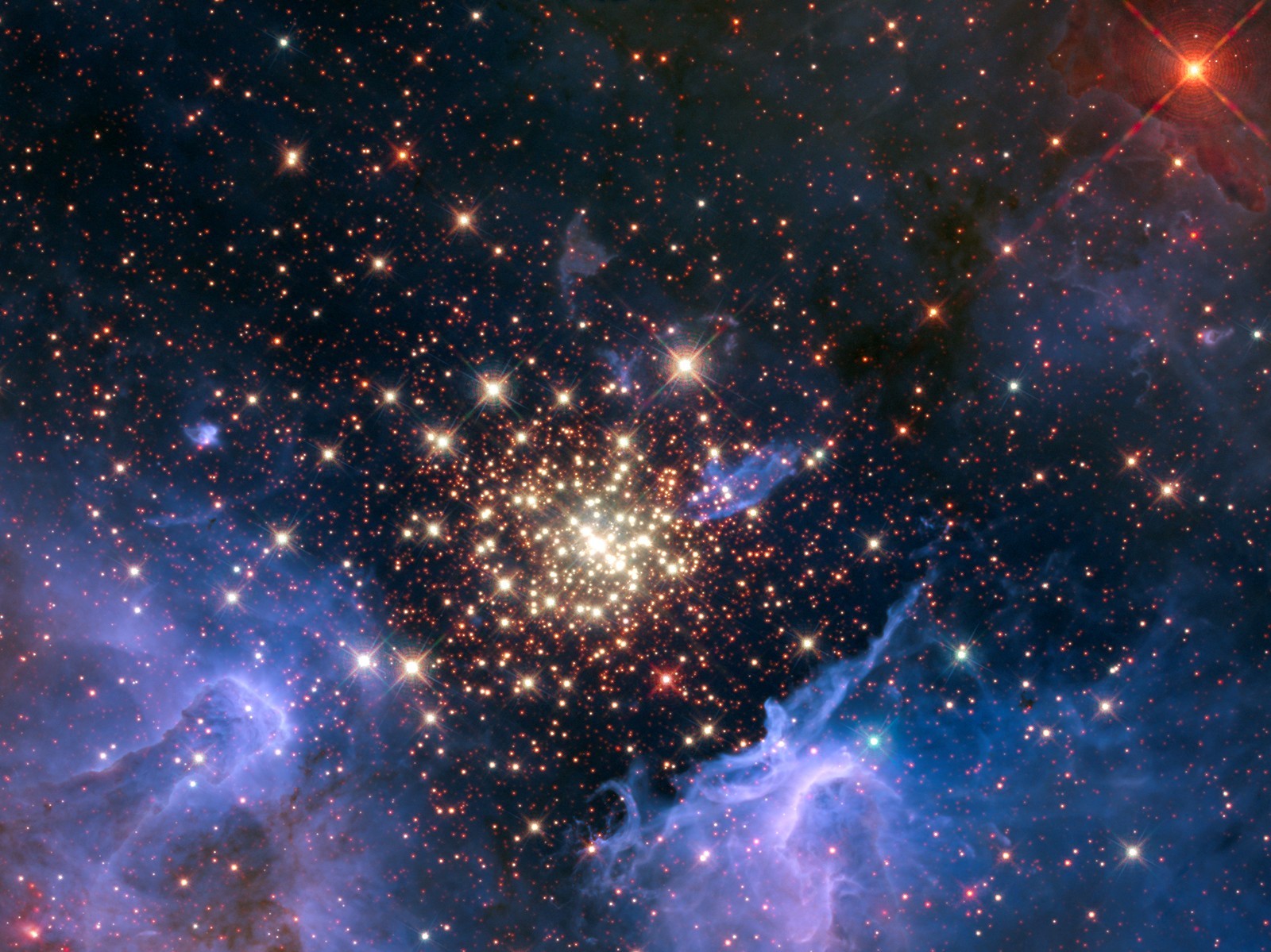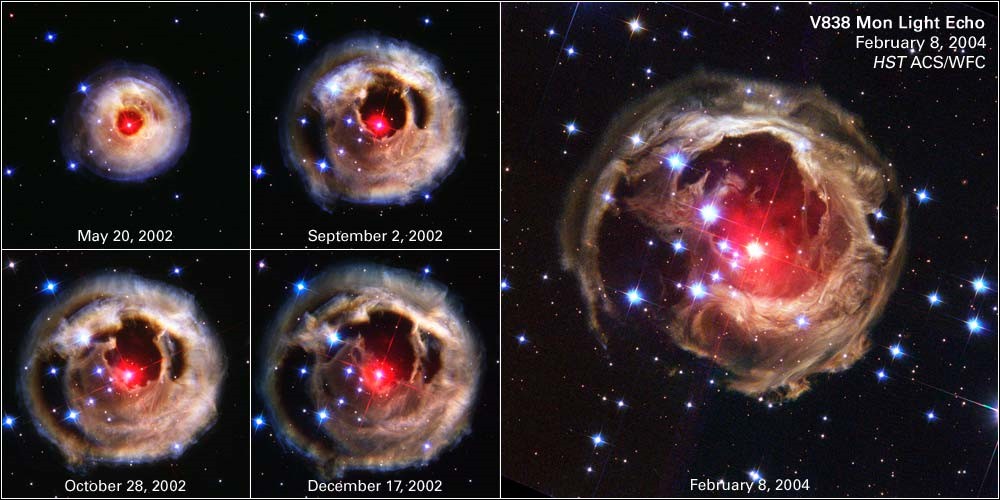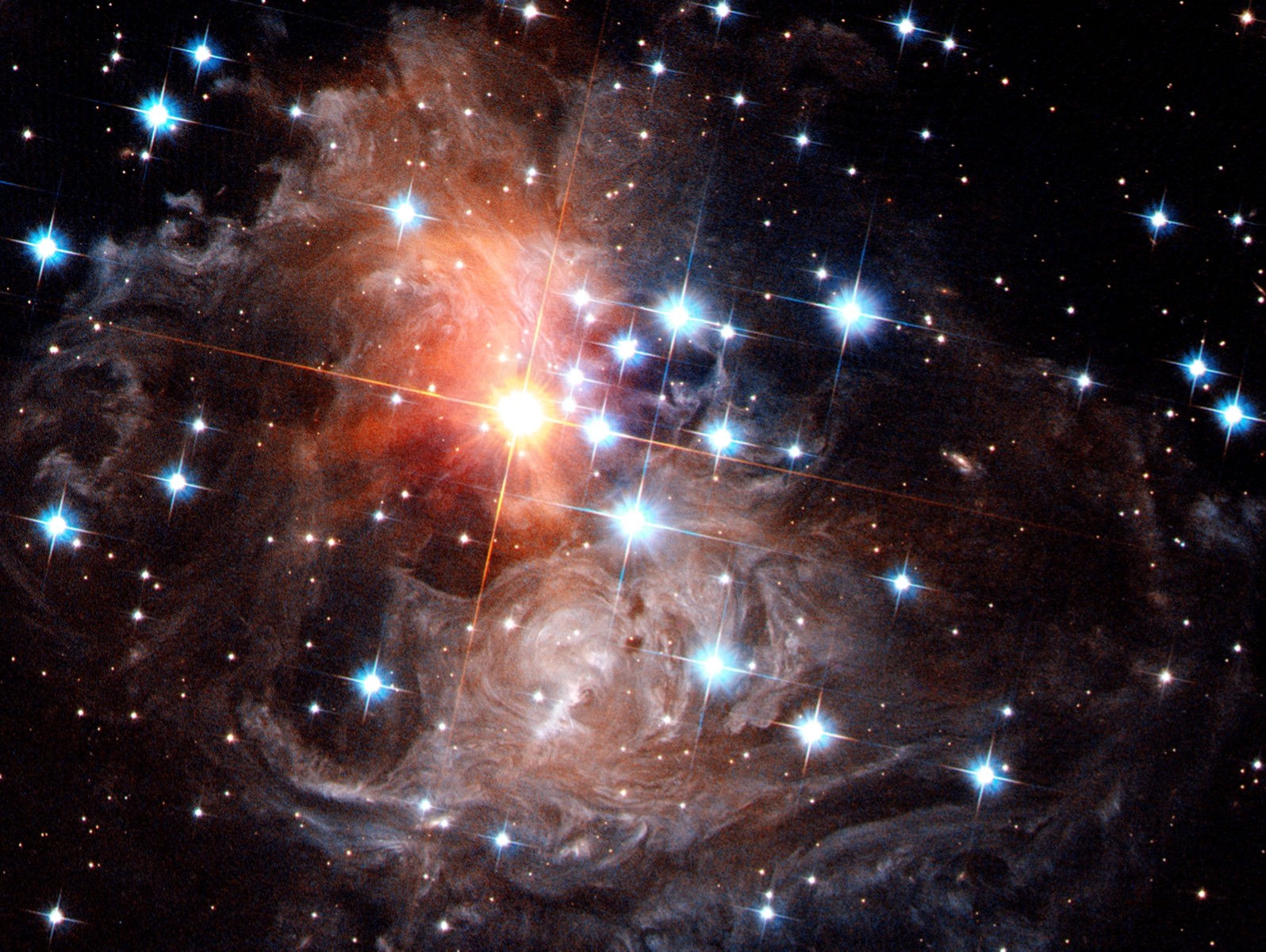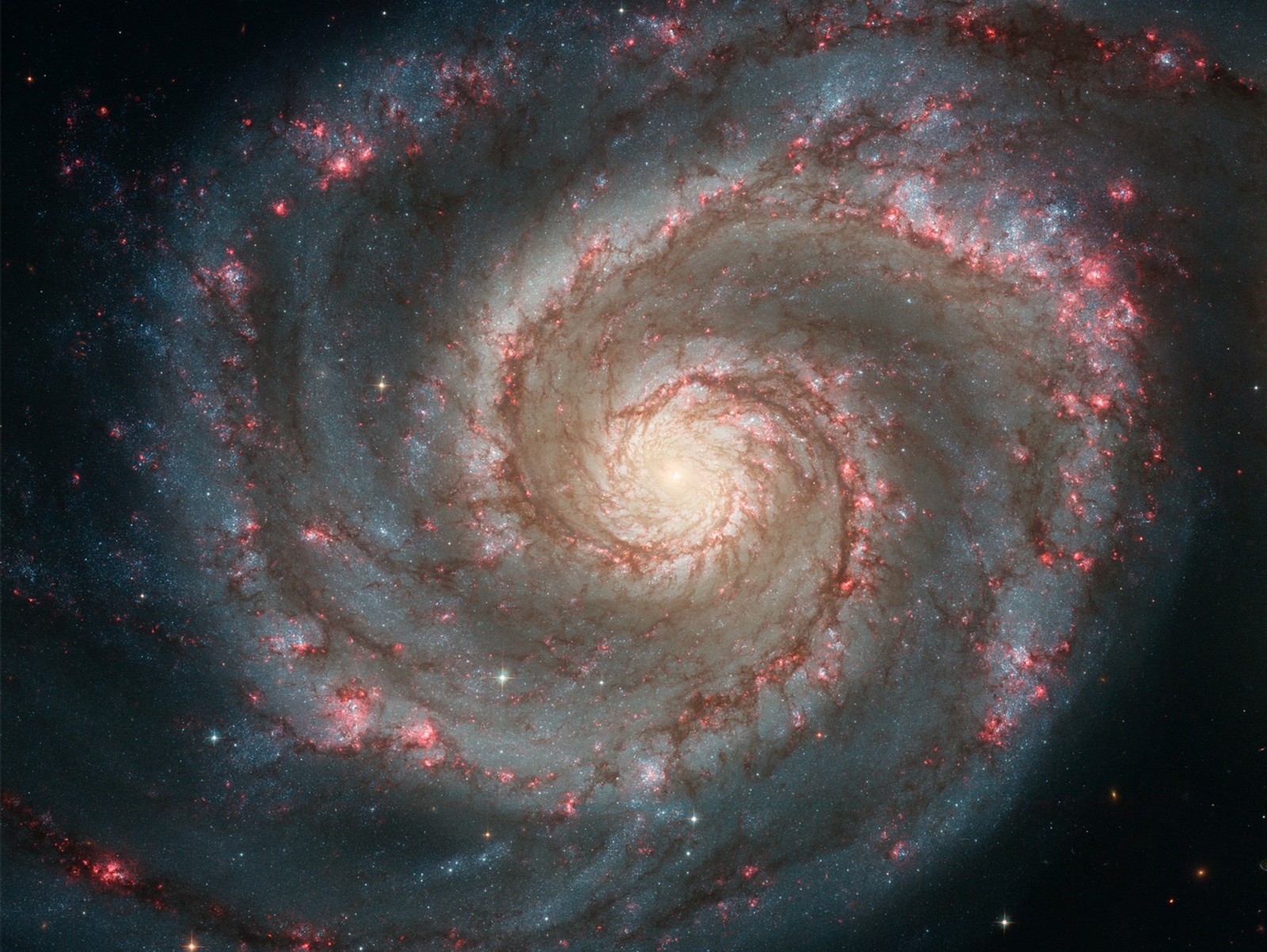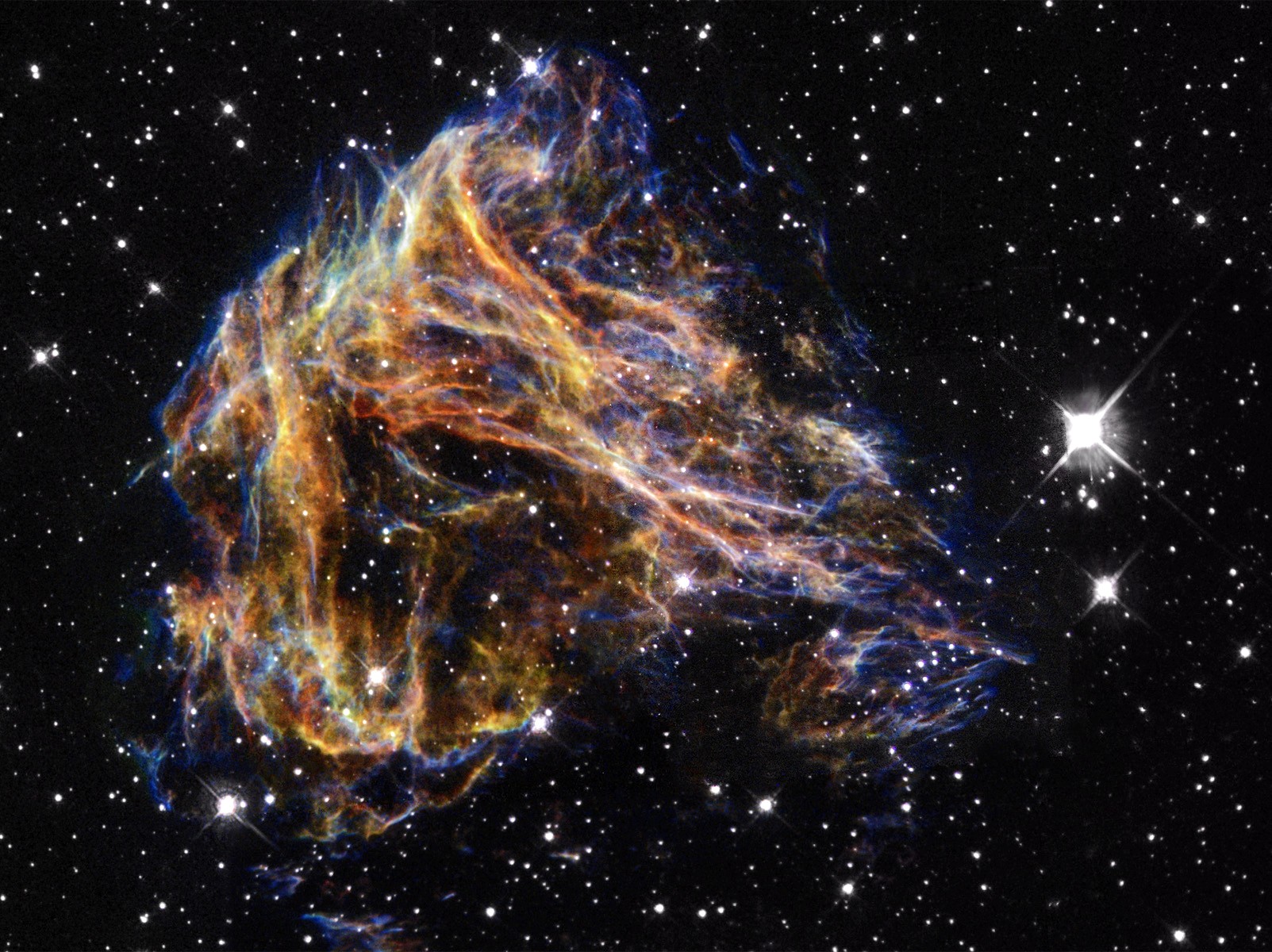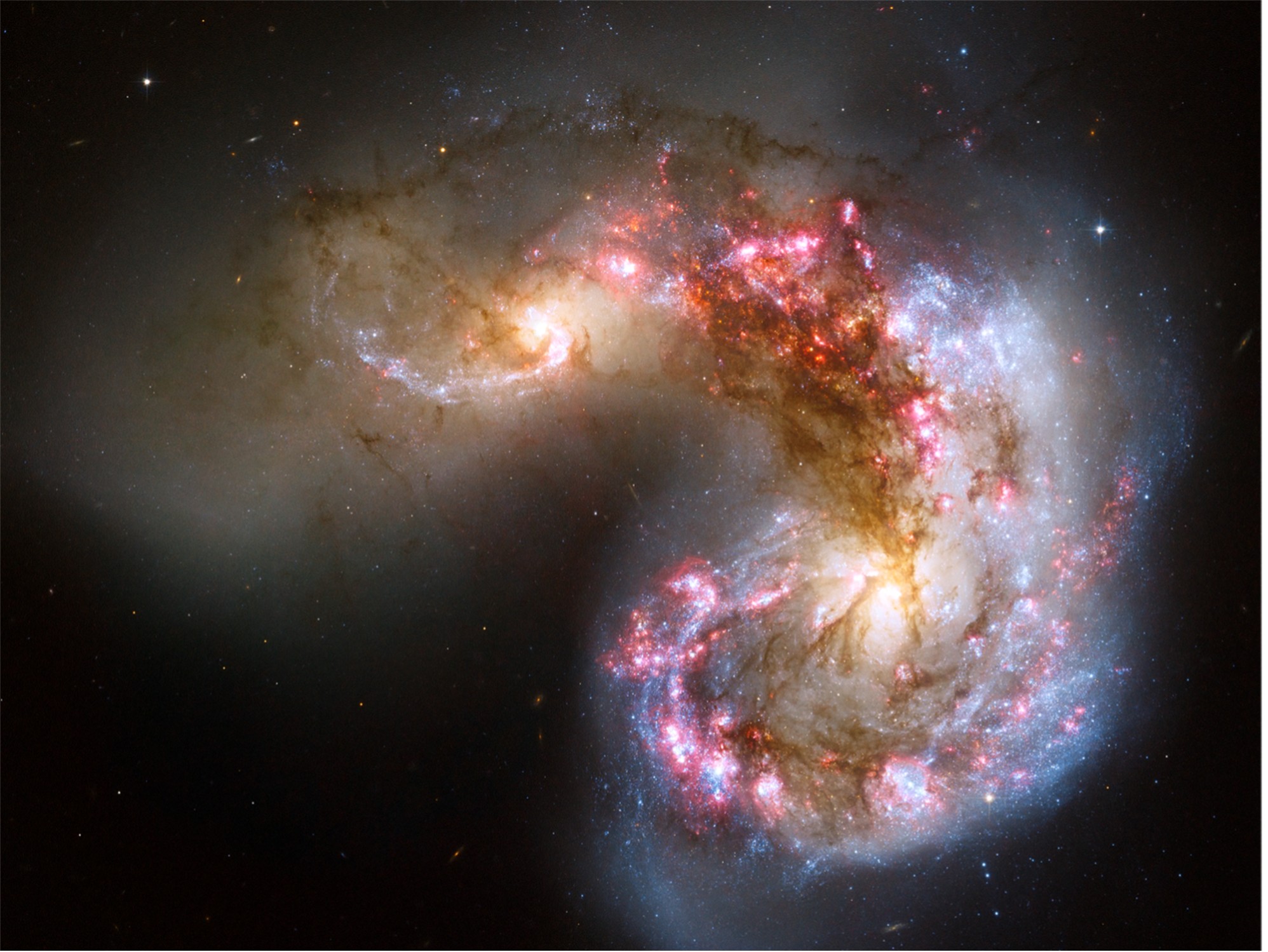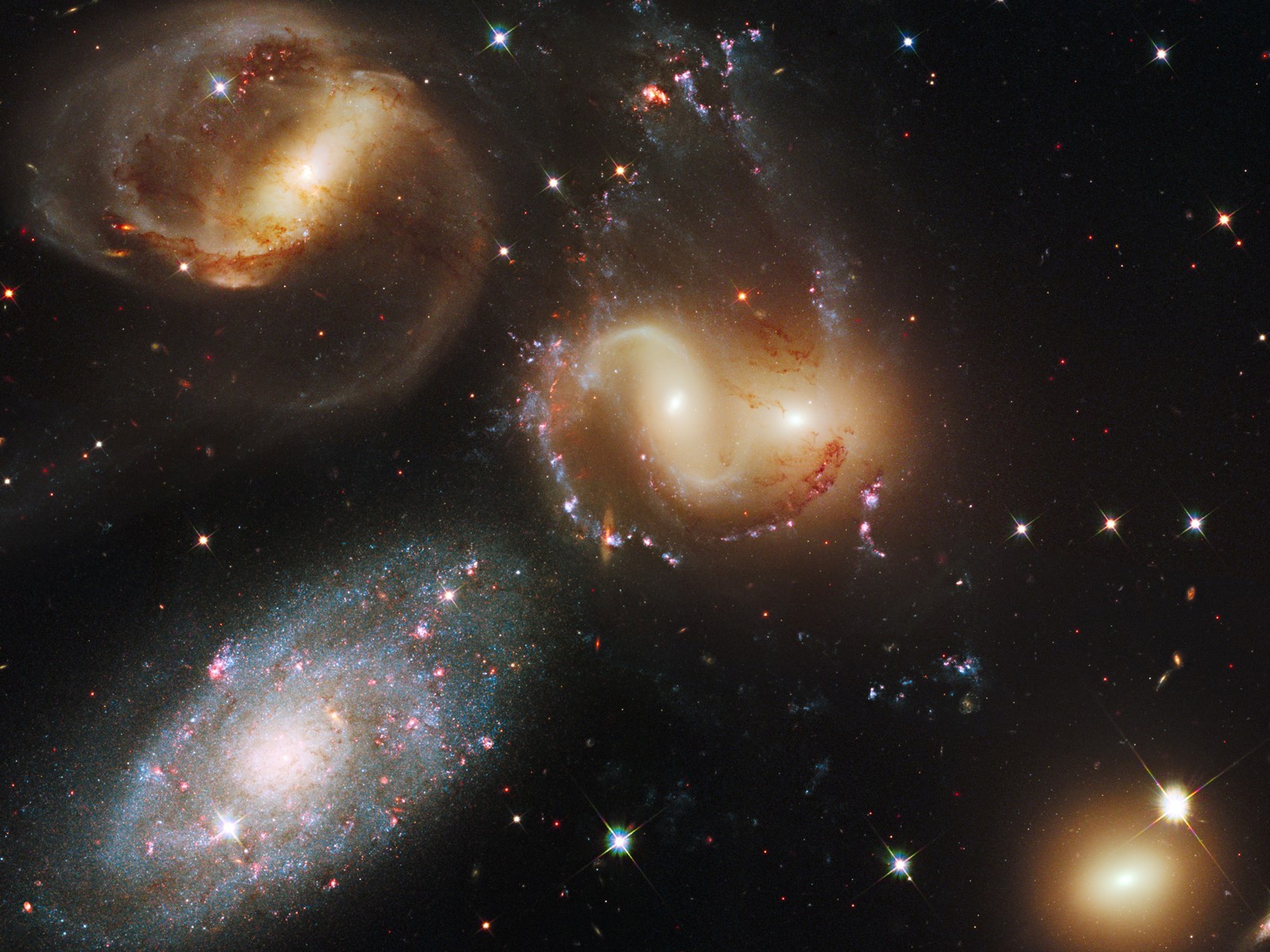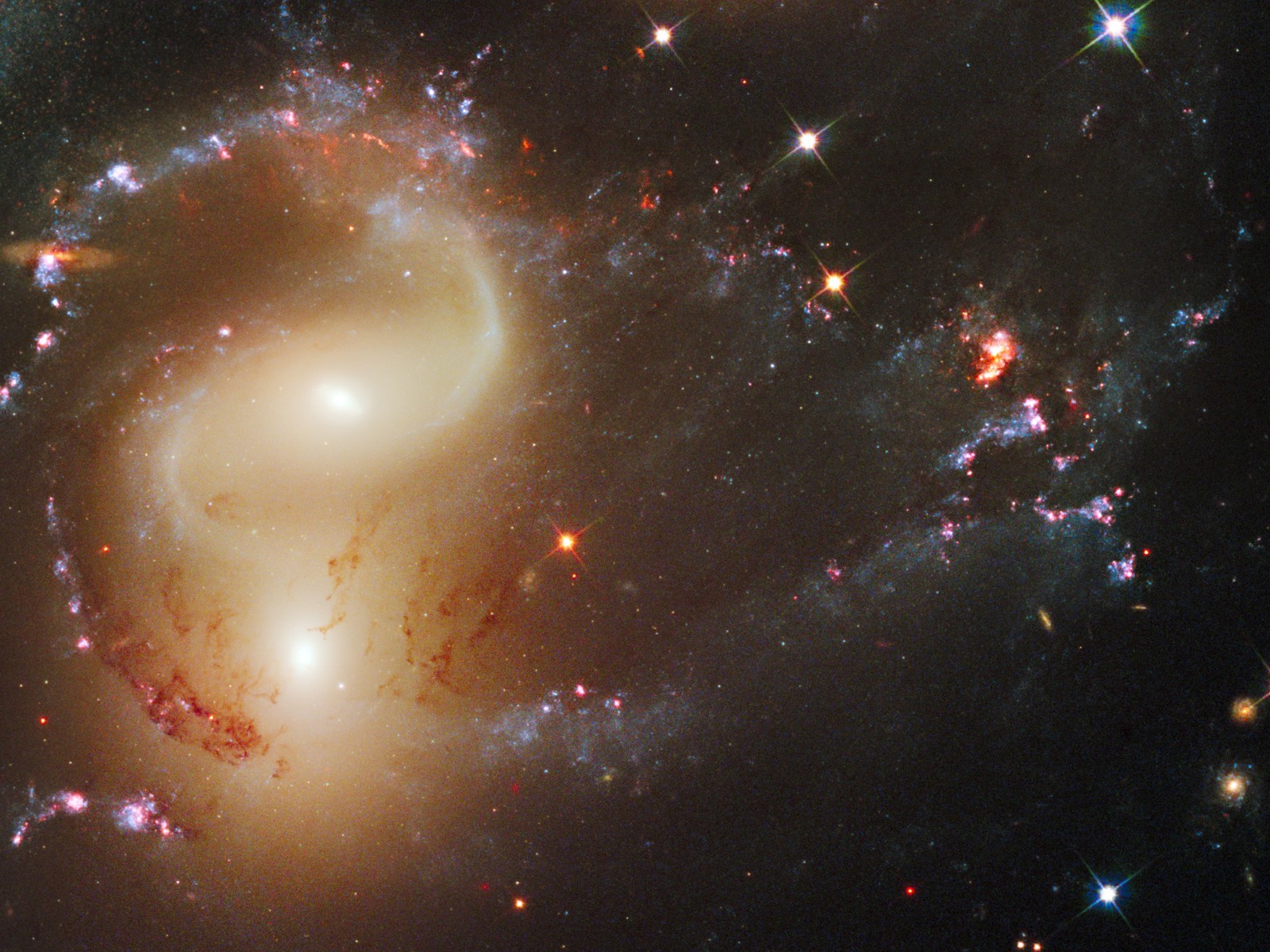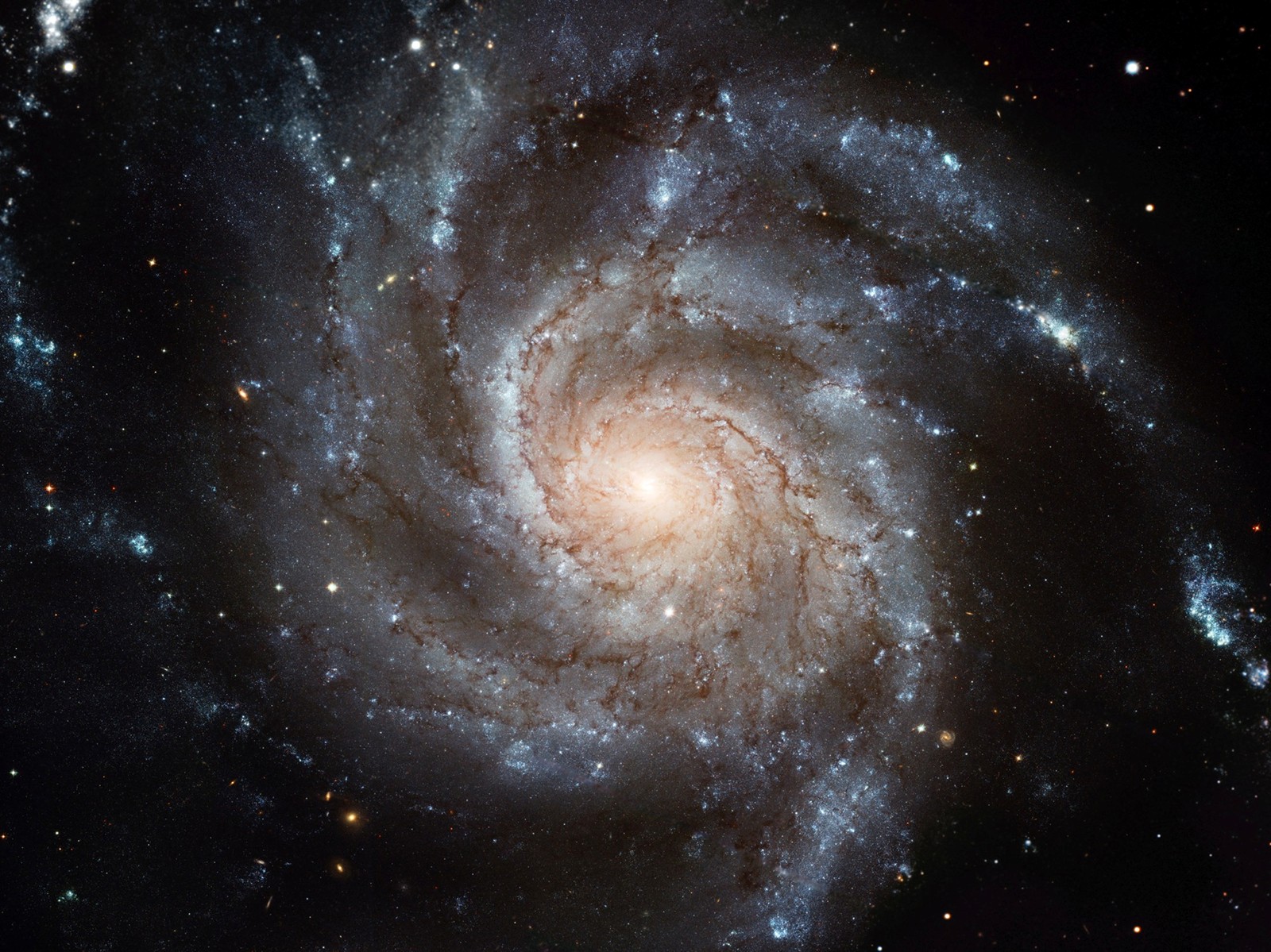NGC 3603
click the picture
20,000 light-years away, near the outer edge of the Sagittarius arm of our own Milky Way galaxy, lies what is believed to be the densest cluster of massive stars in the entire galaxy, surrounded by the Milky Way’s most expansive cloud of interstellar gas.
NGC 3603 was first discovered by Sir John Herschel in 1834. It is known to harbor a blue supergiant star called Sher 25 that astronomers believe is on the brink of exploding as a supernova.
Most of the bright stars in the image are hot blue stars whose ultraviolet radiation and violent winds have blown out an enormous cavity in the gas and dust enveloping the cluster. The largest individual stars are about 115 solar masses. The swirling gases comprise about 400,000 solar masses. Lurking within this vast cloud are a few Bok globules, dark clouds of dense dust and gas with about 10-50 solar masses. They resemble insect cocoons and are undergoing gravitational collapse on their way to forming new stars. Bok globules appear to be some of the coldest objects in the Universe.
![]()
V838 Monocerotis
click the picture
A remarkable galactic event took place on January 6, 2002, one that had never been observed before. Deep in the constellation Monoceros — the Unicorn — a previously unknown star suddenly brightened, just like a nova. Nothing unusual about that, except that instead of gradually dimming out as a nova would, it faded somewhat and then brightened again two months later. And again, in April, a third burst of light, even more brilliant, a million times brighter than our own sun. At the same time, the star expanded to a diameter equal to the diameter of Jupiter’s orbit.
If this had been a nova, the star would have contracted in size, expelling matter and energy in one tremendous burst. But the light patterns from V838 defied any simple explanation, and in fact astronomers are still uncertain as to the cause.
Despite appearances, the amazing progression of photos taken by the Hubble Space Telescope does not depict matter being blown away from an exploding object. Instead, what we are observing are the reflections of infrared light on clouds of dust particles that happened to surround V838 at the time of the event. In the final Hubble photo shown below, the remarkable sphere of dust has largely dissipated, leaving a remnant very similar to what one would expect of a nova, but the giant red star is still clearly visible in the midst of it.
click the picture
![]()
Whirlpool Galaxy M51
click the picture
Discovered over 200 years ago by Charles Messier, the Whirlpool Galaxy is probably the most observed and most photographed of all distant galaxies. And no wonder! Oriented almost perfectly oblique to our perception, its two clearly defined spiral arms are so elegant that galaxies of this type came to be called “grand design” spiral galaxies.
The remarkable structure and frantic star-birthing activity in the Whirlpool Galaxy are due to two powerful gravitational forces. One is a Black Hole in the center of the galaxy, whose presence has been inferred by observation of stellar matter emitting its last dying gasp as it hurtles over the “event horizon” — the point at which the force of the Black Hole is so powerful that light waves are stretched to infinite length, creating a sort of Doppler Effect. The second is a smaller galaxy that passed right through the Whirlpool, perhaps half a billion years ago, stirring up the interstellar dust with wave after wave of gravitational shock.
The star birthing areas can be clearly seen as bright blue areas in this spectacular Hubble photo, taken in 2005.
![]()
Supernova remnant N49 in Large Magellanic Cloud
click the picture
It was just an instant ago by cosmic standards, but some hundreds of thousands of years have likely passed since the massive explosion of a supernova left behind these tracers of sulfur, hydrogen, and oxygen gases.
Deep within this cloud of gases is a neutron star — very likely the core of the original star — that is regularly emitting waves of gamma rays a million of times more powerful than photons. And yet, by neutron star standards, N49 is considered a “soft repeater”, whose gamma rays are less energetic than those emitted by the usual “bursters”.
This neutron star is spinning at the blinding speed of one revolution every eight seconds. Its magnetic field is about a quadrillion (a thousand times a trillion) times more powerful than that of the Earth, putting it in the rare category of “magnetar”.
![]()
Crab Nebula
click the picture
Arguably the best known nebula in the universe, the Crab Nebula is the remnant of a supernova explosion that was observed and recorded in the year 1054. Chinese astronomers wrote that it was visible during daylight for more than three weeks, and in the night sky for almost two years. 700 years later, in 1731, an amateur British astronomer named John Bevis discovered the remnants of the explosion. Charles Messier independently discovered it 27 years later, prompting him to begin his eponymous catalog of astronomical objects, hence its designation as “M1”.
The nebula is expanding at the rate of about 1400km/sec (nearly 4 million mph). The Hubble photo shows the intricate gaseous filaments that used to be the outer layers of the exploded star. The Crab Nebula is “only” 6500 light years away, and can be observed with a pair of binoculars in the constellation Taurus.
![]()
Antennae Galaxies NGC 4038 & NGC 4039
click the picture
At a mere 45-65 million light years of distance, the Antennae Galaxies are the nearest, and perhaps the youngest examples of a pair of colliding galaxies. Their interaction began less than a billion years ago, as they drew towards one another, and then over the next 300 million years, came together and passed through one another. Astronomers believe that gravitational forces will eventually stop them from parting completely, and then, inexorably, they will collapse together into a single huge galaxy.
The collision released vast amounts of energy, creating billions of new stars, which can be discerned in the photo as the bright blue and pink areas. The bright white regions are the nuclei of the two galaxies. Not seen in this photo are the trails of stellar gases and dust that extend in opposite arcs away from the galaxies, the result of gravitational forces known as “galactic tides”.
![]()
Warped Ring Galaxy AM 0644-741
click the picture
Galaxy AM 0644-741 was once a normal spiral galaxy. Sometime in the far distant millions of years ago, there was a collision of cosmic proportions. An intruder galaxy plunged headlong through its very core, profoundly disrupting its gravitational field. Vast shock waves of matter, stars and gases, dust and vapor, suddenly flew outward, collapsing together, forming millions of new stars as they hurtled away from the disrupted core.
Eventually, the outward momentum succumbed to the gravitational forces of the remains of the core and a sparkling blue ring of rapidly coalescing star matter settled into an oddly elliptical orbit . . . hence the nickname “Warped Ring” Galaxy.
AM 0644-741, the Warped Ring Galaxy, lies 300 million light-years away in the direction of the southern constellation Volans (“the flying fish”). The blue color is due to the density of newly formed, extremely hot stars. The pink tinted haze is hydrogen gas fluorescing in the intense ultraviolet light emitted by the star foundries.
![]()
Stephan’s Quintet
click the picture
In 1877, astronomer Edouard Stephan made a startling discovery in the constellation Pegasus: five galaxies in close proximity to one another! As it turns out, he was mistaken, but the mistake was not recognized until very recently, when it became possible to accurately determine how many millions of light years separate us from distant galaxies. The galaxy at the lower left in this photo, known as NGC1320, is 40 million light-years away, while the other four galaxies are 290 million light-years away.
But those other four galaxies are very close together! In fact, they are so close that the energy generated by their proximity is unequalled by any other than has so far been discovered in the entire universe! The two galaxies at center (NGC7318A and NGC 7318B, see detail below) are about to merge into one, and their gravitational interaction has generated a shockwave, or perhaps a cloud consisting of millions of shockwaves, extending over a distance greater than the size of our Milky Way.
click the picture
![]()
Pinwheel Galaxy
click the picture
Although it is 25 Million light-years away, the Pinwheel Galaxy – technically known as Messier 101 – fills as much of the night sky as one-fifth of the full moon. That’s because it measures 170,000 light-years in diameter – more than twice the size of our own Milky Way.
Each of the vast spiraling arms of M101 contains hundreds of star-forming regions, visible as bright blue areas in the photo. Over 3,000 such regions are visible in the photo. Hubble scientists estimate that there are over one trillion stars in M101, including 100 billion stars like our sun, in the prime of their stellar lives.
![]()
